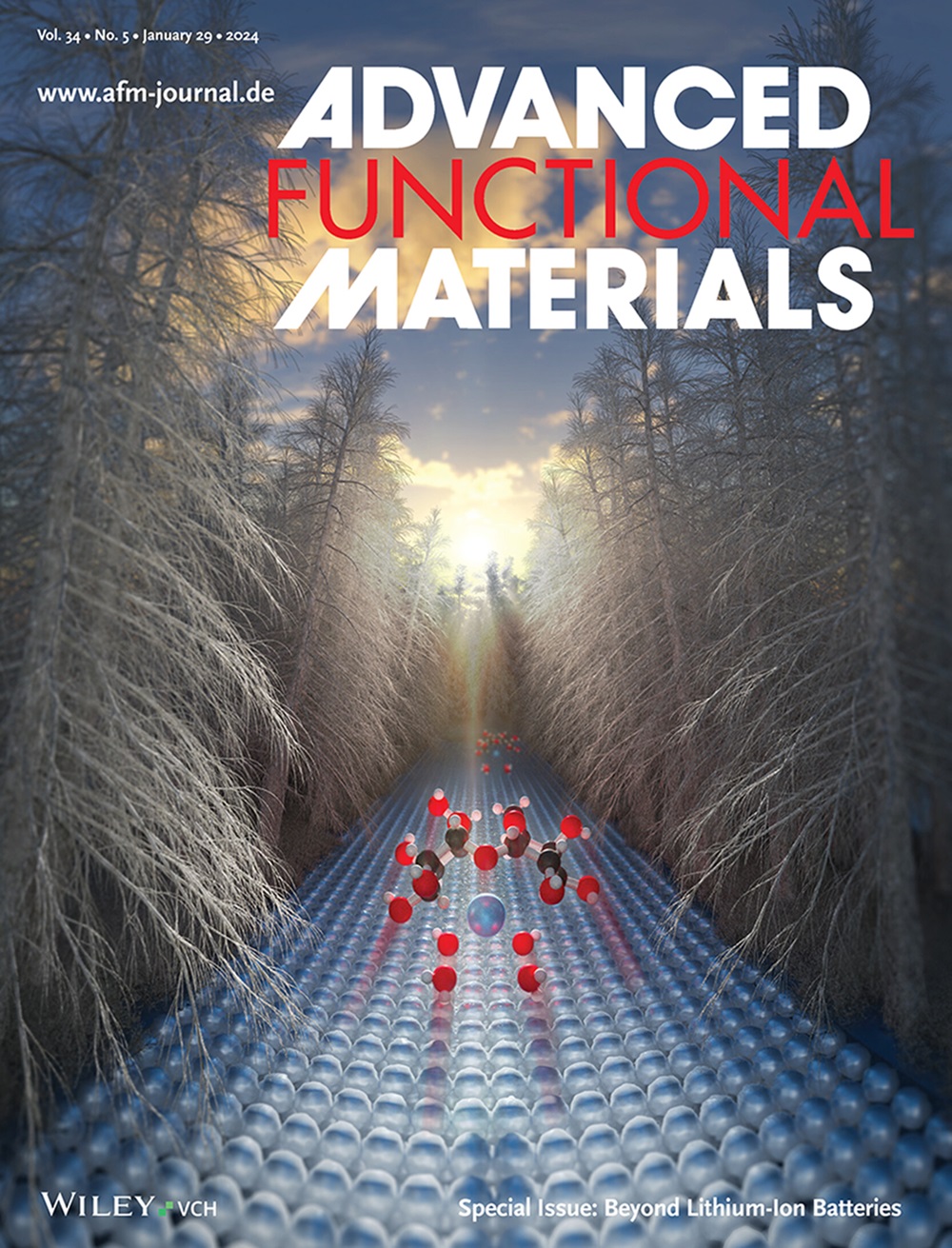Polyzwitterionic Hydrogels with Tunable Interconnected Pore Structures Enabled by Ion‐Induced Phase Separation
IF 19
1区 材料科学
Q1 CHEMISTRY, MULTIDISCIPLINARY
引用次数: 0
Abstract
Hydrogels featuring tunable interconnected pore structures have garnered significant attention in applications requiring controlled mass transport, due to their efficient and adjustable transport properties. However, developing robust fabrication strategies to achieve stable and precisely tailored pore structures remains a significant challenge. Here, a salt ion‐induced phase separation method is presented for the fabrication of polyzwitterionic hydrogels with interconnected pore structures. By leveraging salt ions to modulate polymer chain hydration, this method triggers polyzwitterionic chain aggregation, enabling the formation of interconnected pores. Notably, pore structure regulation is facilely achieved by adjusting salt ion concentration during hydrogel polymerization. When applied to solar steam generation, evaporators based on polyzwitterionic hydrogels with optimized interconnected pore structures demonstrate high‐efficiency mass transport capabilities, exhibiting accelerated evaporation rates of ≈1.950 kg m通过离子诱导相分离实现可调互联孔结构的多两性离子水凝胶
由于水凝胶具有高效和可调节的输运特性,在需要控制质量输运的应用中,具有可调互联孔隙结构的水凝胶引起了极大的关注。然而,开发强大的制造策略来实现稳定和精确定制的孔隙结构仍然是一个重大挑战。本文提出了一种盐离子诱导相分离的方法,用于制备具有互联孔结构的多两性离子水凝胶。通过利用盐离子调节聚合物链水化,该方法触发多两性离子链聚集,从而形成相互连接的孔隙。值得注意的是,在水凝胶聚合过程中,通过调节盐离子浓度可以很容易地实现孔结构调节。当应用于太阳能蒸汽产生时,基于优化的互连孔结构的多两性离子水凝胶的蒸发器显示出高效率的质量传输能力,其蒸发速率约为1.950 kg m−2 h−1。此外,这些水凝胶表现出显著的稳定性,在高盐度盐水(10 wt.% NaCl)中保持12小时以上的稳定性能。该研究为工程水凝胶孔隙结构提供了一种实用且可扩展的方法,在解决能源、环境和生物医学领域的各种质量运输挑战方面具有广泛的适用性。
本文章由计算机程序翻译,如有差异,请以英文原文为准。
求助全文
约1分钟内获得全文
求助全文
来源期刊

Advanced Functional Materials
工程技术-材料科学:综合
CiteScore
29.50
自引率
4.20%
发文量
2086
审稿时长
2.1 months
期刊介绍:
Firmly established as a top-tier materials science journal, Advanced Functional Materials reports breakthrough research in all aspects of materials science, including nanotechnology, chemistry, physics, and biology every week.
Advanced Functional Materials is known for its rapid and fair peer review, quality content, and high impact, making it the first choice of the international materials science community.
 求助内容:
求助内容: 应助结果提醒方式:
应助结果提醒方式:


